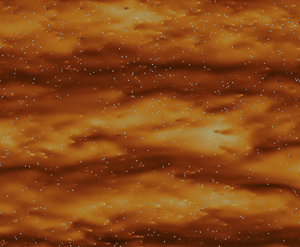Crossref Citations
This article has been cited by the following publications. This list is generated based on data provided by
Crossref.
Duque-Daza, Carlos Alberto
Ramirez-Pastran, Jesus
and
Lain, Santiago
2021.
Influence of Particle Mass Fraction over the Turbulent Behaviour of an Incompressible Particle-Laden Flow.
Fluids,
Vol. 6,
Issue. 11,
p.
374.
Michel, A.
and
Arcen, B.
2021.
Reynolds number effect on the concentration and preferential orientation of inertial ellipsoids.
Physical Review Fluids,
Vol. 6,
Issue. 11,
Xia, Yan
Yu, Zhaosheng
Lin, Zhaowu
and
Guo, Yu
2022.
Model of interfacial term in turbulent kinetic energy equation and computation of dissipation rate for particle-laden flows.
Physics of Fluids,
Vol. 34,
Issue. 8,
Laín, Santiago
Ortíz, Daniel
Ramirez, Jesús Antonio
and
Duque, Carlos Alberto
2022.
Analysis and Discussion of Two-Way Coupling Effects in Particle-Laden Turbulent Channel Flow.
Ingeniería e Investigación,
Vol. 43,
Issue. 1,
p.
e87275.
Horwitz, J.A.K.
Iaccarino, G.
Eaton, J.K.
and
Mani, A.
2022.
The discrete Green's function paradigm for two-way coupled Euler–Lagrange simulation.
Journal of Fluid Mechanics,
Vol. 931,
Issue. ,
Liu, Hongyou
Feng, Yuen
and
Zheng, Xiaojing
2022.
Experimental investigation of the effects of particle near-wall motions on turbulence statistics in particle-laden flows.
Journal of Fluid Mechanics,
Vol. 943,
Issue. ,
Chen, Guo
Wang, Haiou
Luo, Kun
and
Fan, Jianren
2022.
Two-way coupled turbulent particle-laden boundary layer combustion over a flat plate.
Journal of Fluid Mechanics,
Vol. 948,
Issue. ,
Brandt, Luca
and
Coletti, Filippo
2022.
Particle-Laden Turbulence: Progress and Perspectives.
Annual Review of Fluid Mechanics,
Vol. 54,
Issue. 1,
p.
159.
Williams, J.
Wolfram, U.
and
Ozel, A.
2022.
Neural stochastic differential equations for particle dispersion in large-eddy simulations of homogeneous isotropic turbulence.
Physics of Fluids,
Vol. 34,
Issue. 11,
Varaksin, Aleksey Yu.
and
Ryzhkov, Sergei V.
2022.
Turbulence in Two-Phase Flows with Macro-, Micro- and Nanoparticles: A Review.
Symmetry,
Vol. 14,
Issue. 11,
p.
2433.
Hajisharifi, Arash
Marchioli, Cristian
and
Soldati, Alfredo
2022.
Interface topology and evolution of particle patterns on deformable drops in turbulence.
Journal of Fluid Mechanics,
Vol. 933,
Issue. ,
Rohilla, Naveen
and
Goswami, Partha S.
2023.
Assessment of local isotropy, energetics, and modified eddy-viscosity based modelling for particle-laden turbulent channel flows.
Journal of Fluid Mechanics,
Vol. 970,
Issue. ,
Battista, F.
Gualtieri, P.
Mollicone, J.-P.
Salvadore, F.
and
Casciola, C. M.
2023.
Drag increase and turbulence augmentation in two-way coupled particle-laden wall-bounded flows.
Physics of Fluids,
Vol. 35,
Issue. 4,
Dave, Himanshu
and
Kasbaoui, M. Houssem
2023.
Mechanisms of drag reduction by semidilute inertial particles in turbulent channel flow.
Physical Review Fluids,
Vol. 8,
Issue. 8,
Gualtieri, P.
Battista, F.
Salvadore, F.
and
Casciola, C.M.
2023.
Effect of Stokes number and particle-to-fluid density ratio on turbulence modification in channel flows.
Journal of Fluid Mechanics,
Vol. 974,
Issue. ,
Rohilla, Naveen
Arya, Siddhi
and
Goswami, Partha Sarathi
2023.
Effect of channel dimensions and Reynolds numbers on the turbulence modulation for particle-laden turbulent channel flows.
Physics of Fluids,
Vol. 35,
Issue. 5,
Zhu, Zhengping
Hu, Ruifeng
and
Zheng, Xiaojing
2023.
A multiple-time-step integration algorithm for particle-resolved simulation with physical collision time.
International Journal of Multiphase Flow,
Vol. 163,
Issue. ,
p.
104411.
Gao, Wei
Samtaney, Ravi
and
Richter, David H.
2023.
Direct numerical simulation of particle-laden flow in an open channel at .
Journal of Fluid Mechanics,
Vol. 957,
Issue. ,
West, Jacob R.
Maurel–Oujia, Thibault
Matsuda, Keigo
Schneider, Kai
Jain, Suhas S.
and
Maeda, Kazuki
2024.
Clustering, rotation, and swirl of inertial particles in turbulent channel flow.
International Journal of Multiphase Flow,
Vol. 174,
Issue. ,
p.
104764.
Shuai, Shuai
Roy, Anubhab
and
Kasbaoui, M. Houssem
2024.
The merger of co-rotating vortices in dusty flows.
Journal of Fluid Mechanics,
Vol. 981,
Issue. ,

 $\varPsi =0.34\,\%$,
$\varPsi =0.34\,\%$,  $3.37\,\%$ and
$3.37\,\%$ and  $33.7\,\%$, with only the latter two showing turbulence modulation. The increase of the drag is strong at
$33.7\,\%$, with only the latter two showing turbulence modulation. The increase of the drag is strong at  $\varPsi =3.37\,\%$, but mild in the densest case. Two distinct regimes of turbulence modulation emerge: for smaller mass fractions, the turbulence statistics are weakly affected and the near-wall particle accumulation increases the drag so the flow appears as a single-phase flow at slightly higher Reynolds number. Conversely, at higher mass fractions, the particles modulate the turbulent dynamics over the entire flow, and the interphase coupling becomes more complex. In this case, fluid Reynolds stresses are attenuated, but the inertial particle dynamics near the wall increases the drag via correlated velocity fluctuations, leading to an overall drag increase. Hence, we conclude that, although particles at high mass fractions reduce the fluid turbulent drag, the solid phase inertial dynamics still increases the overall drag. However, inspection of the streamwise momentum budget in the two-way coupling limit of vanishing volume fraction, but finite mass fraction, indicates that this trend could reverse at even higher particle load.
$\varPsi =3.37\,\%$, but mild in the densest case. Two distinct regimes of turbulence modulation emerge: for smaller mass fractions, the turbulence statistics are weakly affected and the near-wall particle accumulation increases the drag so the flow appears as a single-phase flow at slightly higher Reynolds number. Conversely, at higher mass fractions, the particles modulate the turbulent dynamics over the entire flow, and the interphase coupling becomes more complex. In this case, fluid Reynolds stresses are attenuated, but the inertial particle dynamics near the wall increases the drag via correlated velocity fluctuations, leading to an overall drag increase. Hence, we conclude that, although particles at high mass fractions reduce the fluid turbulent drag, the solid phase inertial dynamics still increases the overall drag. However, inspection of the streamwise momentum budget in the two-way coupling limit of vanishing volume fraction, but finite mass fraction, indicates that this trend could reverse at even higher particle load.


